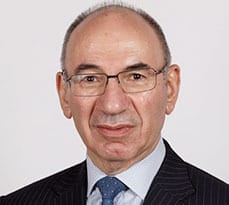The next generation will face real investment returns of only two per cent based on historical data, says Professor Elroy Dimson.

The “Generation Z” born between the mid-1990s and early 2010s will likely face a future of very low annualised real investment returns of about two per cent, Professor Elroy Dimson of Cambridge Judge Business School told a webinar organised by the CFA Institute.

The presentation by Elroy, Chairman of the Centre for Endowment Asset Management at Cambridge Judge, is based on historical data in his co-authored comprehensive global review of investment returns in 23 different countries, which now covers 120 years from 1900 through 2019. He updates the study annually with his co-authors Professor Paul Marsh and Dr Mike Staunton of London Business School.
“We are in a world where, looking forward, you can expect a typical investment portfolio to beat inflation by only two per cent,” Elroy told the CFA Institute webinar, which attracted an online audience of global investment professionals.
The Baby Boom generation born just after World War II enjoyed “remarkably” good annualised real (after inflation) returns of seven per cent for equities and 3.5 per cent for government bonds; the following Generation X has seen equities at five per cent and bonds at 4.8 per cent as inflation eased, and Millennials experienced similar returns over 1990-2019 of 4.6 per cent for equities and 5.4 per cent for bonds.
In contrast, the world in the future for Generation Z (who are only now starting to invest) will likely see the annualised real return on equities at 3.5 per cent and, based on current rates, government bonds offering a near-zero return.
A typical investment portfolio might have 60 per cent equities and 40 per cent in bonds. This translates into expected annualised real returns of only two per cent for Generation Z.
“We have examined the investment performance of the global equity market since 1900. Based on the historical evidence, we estimate that equities will provide a risk premium of around 3.5 per cent compared to Treasury bills,” Elroy said. “But the real return on government bonds is very low, around zero.”


